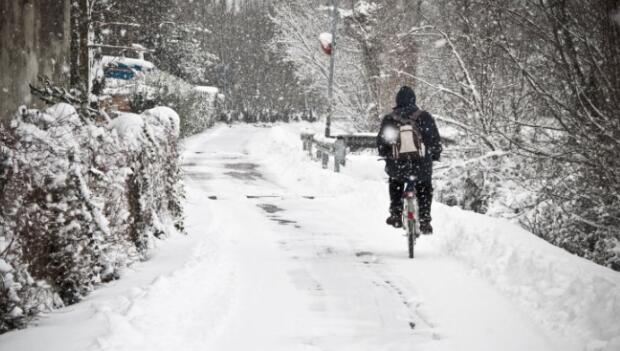
Some cyclists hate the cold, others hate riding indoors.
If you hate doing long rides indoors but are hesitant to ride outside in the cold, perhaps this column will convince you that riding outdoors is worth a try. You must, however, be prepared.
First, let's define "really cold". For some cyclists, riding a bike in any temperature below 50 degrees Fahrenheit is really cold. For this column, "really cold" is defined as below 32 degrees. If you think that riding your bike in temperatures below freezing is impossible, know that hard-core commuters in Colorado and other northern latitude states are often found cycling in frigid temps.
Do You Need to Ride Outside?
My first really cold ride, at 16 F, was in January a few years back. I couldn't stand the thought of riding indoors again, especially for a two-hour ride. Some will call it justification, but I prefer to call it logic. My thought process was that I would ski in 16-degree temperatures, why not cycle? Cycling outdoors in the fresh air and sun would be much better for my mental and physical well-being than riding an indoor trainer for two hours.
No, I didn't have to ride outdoors; it was a well-thought-out choice, a preference. After doing that first really cold ride, I now know that I can do it and I much prefer being outside than inside.
Is it Safe?
I don't think riding outside in sub-freezing temperatures is necessarily dangerous, but I do believe certain precautions are wise:
- If the roads are snow-packed or icy, try to choose a route that has low traffic volume.
- Minimize long downhill sections to avoid getting cold from wind chill.
- A mountain bike, with its wide tires, is more stable than a road bike.
- Run lower tire pressure to increase traction and handling.
- Ride with a buddy so that if one of you has trouble, there is another person to lend a hand.
- Carry disposable chemical hand or toe warmers. They can be put in your shoes if your toes get cold, or can be used to warm your hands if you have to do a mechanical repair.
- Carry a cell phone.
- Have someone drive a sag vehicle for you or, at minimum, be available to pick you up if you call for help.
How Do You Dress for Sub-Freezing Cycling?
I'm sure you already know that some people show up in a jersey and knee warmers for the same ride that someone else will be wearing leg warmers, arm warmers, a vest and a base layer shirt. I'll give you my personal preferences for cold-weather riding gear, but know that I get cold easily.
Recently, I did a ride where the temperature ranged from 10.9 degrees to about 24 degrees, not counting wind chill. I'll take you through my outfit from head to toe.
The Head
I know a lot of cyclists like an under-the-helmet head cover, but I prefer a helmet cover. I like a helmet cover for wind chill protection and moisture protection. If it starts raining or snowing, I find that a head cover gets wet and cold, while a helmet cover is more protective. My current favorite helmet cover is made by Gore.
In addition to wind and moisture protection, it is easy for me to remove the cover and regulate my body temperature. It is more cumbersome for me to remove an under-the-helmet head cover than to just snap off a helmet cover.


